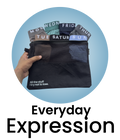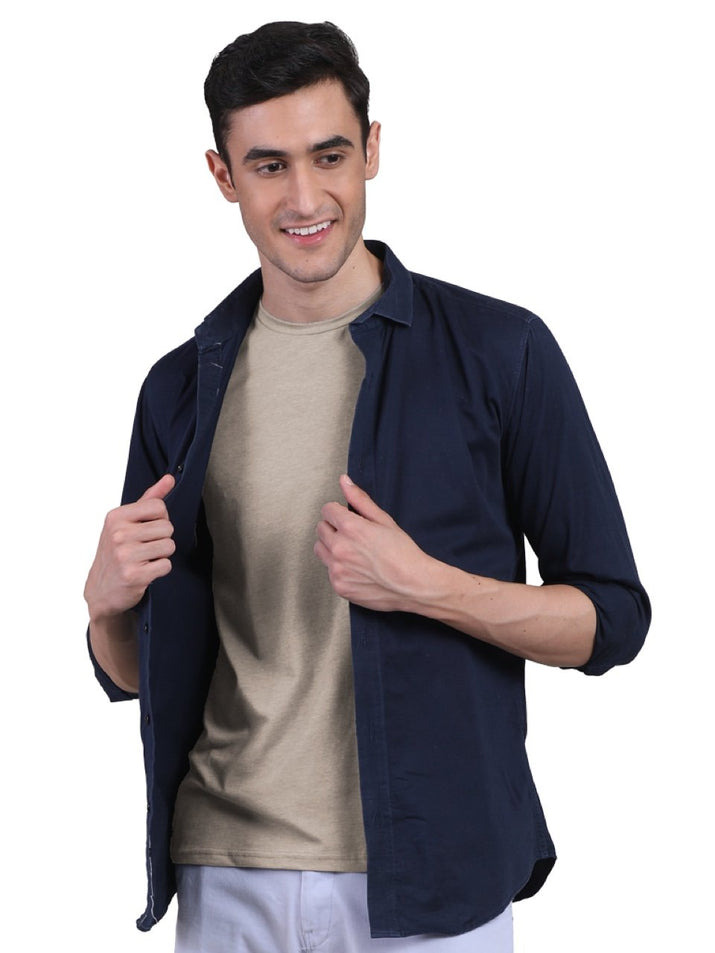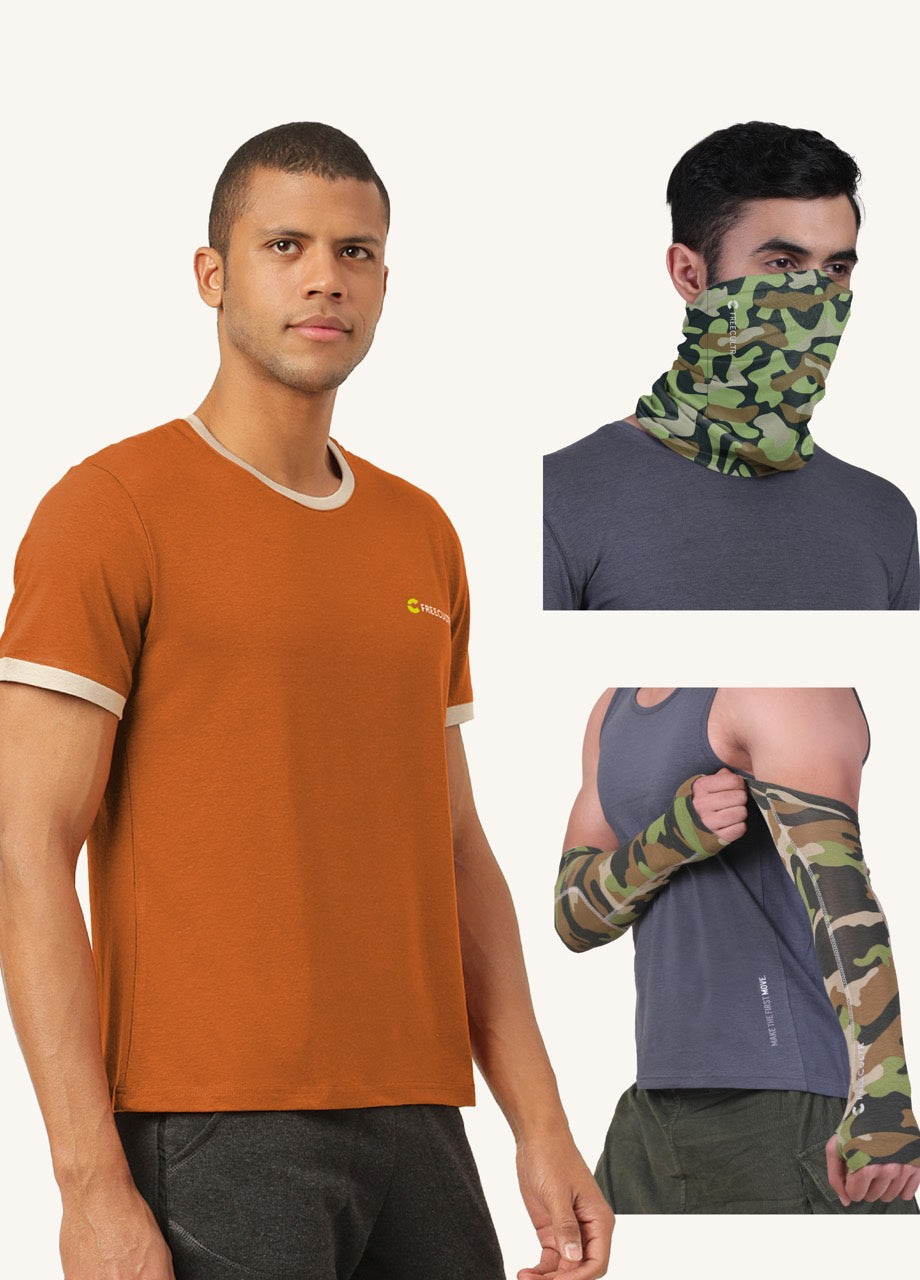The unassuming layers beneath our everyday clothes often spark debate: undershirts versus crew neck tees. While both serve as foundational garments, understanding their distinct purposes is crucial for optimal comfort, style. Even garment longevity. We'll dissect these wardrobe staples, examining key criteria like fabric composition – noting the breathability differences between cotton, modal. Synthetic blends – and construction, focusing on neckline variations and their impact on layering. Moreover, we'll evaluate factors such as absorbency, crucial for managing perspiration. Overall aesthetic versatility, considering how each garment performs under various outerwear choices, from casual button-downs to structured blazers. By analyzing these elements, you can make informed decisions to best suit your individual needs and sartorial preferences.

Defining Undershirts and Crew Neck Tees
Before diving into a comparison, it's crucial to define what we're talking about. While both undershirts and crew neck tees are upper-body garments, their primary purposes and designs differ significantly.
An undershirt is specifically designed to be worn underneath other clothing. Its main functions include:
- Absorbing sweat to prevent it from reaching outer layers, thus extending the lifespan of your shirts.
- Providing an extra layer of warmth in cooler weather.
- Creating a smoother silhouette by concealing nipples or chest hair.
- Protecting dress shirts from deodorant stains.
Key characteristics of undershirts typically include:
- Lightweight and breathable fabric (often cotton, modal, or blends).
- A close-fitting design.
- Typically available in white, gray, or black to minimize visibility under other garments.
- Often feature a deeper V-neck or crew neck to remain hidden beneath a dress shirt or polo.
A crew neck tee, on the other hand, is designed to be worn as an outer garment. While it can be used as an undershirt, its primary function is as a standalone shirt.
Crew neck tees are characterized by:
- A thicker fabric compared to most undershirts.
- A wider range of colors, patterns. Designs.
- A more relaxed fit than an undershirt.
- A rounded neckline that sits close to the base of the neck.
Fabric Composition: Breathability and Comfort
The fabric used in undershirts and crew neck tees plays a significant role in their comfort and performance. While both often utilize cotton, the specific type of cotton, its weave. Any blend with other materials can drastically alter the feel and function of the garment.
Undershirts: Often prioritize breathability and moisture-wicking. Common fabric choices include:
- 100% Cotton: A classic choice, known for its softness and affordability. But, cotton can retain moisture, potentially leading to discomfort in hot or humid conditions.
- Modal: A semi-synthetic fiber made from beech tree pulp. Modal is incredibly soft, breathable. Resistant to shrinking. It also wicks moisture better than cotton.
- Cotton Blends (e. G. , Cotton/Polyester, Cotton/Spandex): These blends offer a balance of comfort, durability. Moisture-wicking properties. Polyester adds durability and helps the fabric dry faster, while spandex provides stretch for a better fit.
- Bamboo: A naturally antibacterial and breathable fabric. Bamboo is also known for its moisture-wicking properties and sustainable sourcing.
Crew Neck Tees: Offer a wider variety of fabric options, balancing comfort with style and durability.
- 100% Cotton: Still a popular choice. Often uses higher-quality cotton varieties like Pima or Supima for added softness and durability.
- Cotton/Polyester Blends: Common for their durability and wrinkle resistance. These blends are often used in graphic tees or shirts intended for more rugged wear.
- Tri-Blends (e. G. , Cotton/Polyester/Rayon): Offer a superior level of softness, drape. Moisture-wicking. Rayon adds a silky feel and enhances the fabric's ability to wick away sweat.
- Linen: A breathable and lightweight option, ideal for warmer weather. Linen has a textured appearance and tends to wrinkle easily.
Comparison Table: Fabric Properties
| Fabric | Undershirt Suitability | Crew Neck Tee Suitability | Pros | Cons |
|---|---|---|---|---|
| 100% Cotton | Good | Excellent | Soft, affordable, breathable | Retains moisture, can shrink |
| Modal | Excellent | Good | Very soft, breathable, moisture-wicking, resists shrinking | Can be more expensive |
| Cotton/Polyester | Good | Excellent | Durable, wrinkle-resistant, moisture-wicking | Can feel less soft than 100% cotton |
| Tri-Blend | Good | Excellent | Very soft, excellent drape, moisture-wicking | Can be more expensive |
| Linen | Poor | Good | Breathable, lightweight | Wrinkles easily, can be scratchy |
Fit and Style: Concealment vs. Presentation
Fit is a crucial differentiator between undershirts and crew neck tees. An undershirt is designed to be a base layer, so it needs to fit closely to the body without being restrictive. A crew neck tee, on the other hand, has more leeway in terms of fit, depending on the desired style.
Undershirt Fit:
- Snug Fit: Undershirts should fit close to the body to effectively absorb sweat and provide a smooth base layer. Too loose. They won't effectively wick away moisture; too tight. They'll be uncomfortable and potentially visible through your outer shirt.
- Length: Sufficient length is essential to prevent the undershirt from becoming untucked. Many undershirts are designed with extra length, often referred to as a "tucked-in" fit.
- Neckline: The neckline should be chosen based on the type of shirts you'll be wearing over the undershirt. Deeper V-necks are ideal for button-down shirts, while crew necks work well under polos or other tees.
- Sleeves: Sleeve length should be short enough to remain hidden under short-sleeved outer shirts. Sleeveless undershirts are also a popular option.
Crew Neck Tee Fit:
- Classic Fit: A more relaxed fit that provides comfort and ease of movement. Suitable for casual wear.
- Slim Fit: A more tailored fit that contours the body. Provides a more modern and stylish look.
- Oversized Fit: A loose and baggy fit that's popular for streetwear and casual styles.
- Length: Tee length should be appropriate for your torso length and the style you're aiming for. A tee that's too short will expose your midriff, while one that's too long can look sloppy.
- Neckline: The crew neck should sit comfortably around the base of your neck without being too tight or too loose.
Style Considerations:
- Color: Undershirts are typically worn in neutral colors (white, gray, black) to minimize visibility. Crew neck tees offer a vast array of colors, patterns. Graphics.
- Design: Undershirts are usually plain and simple. Crew neck tees can feature logos, graphics, or intricate designs.
- Occasion: Undershirts are typically worn for practical purposes, while crew neck tees can be worn for casual or even semi-formal occasions, depending on the style and design.
When to Wear Which: Practical Applications
The choice between an undershirt and a crew neck tee depends largely on the situation and your personal preferences.
Undershirts are ideal for:
- Wearing under dress shirts: They protect your dress shirts from sweat and deodorant stains, prolonging their lifespan.
- Wearing under polos: They provide a smoother silhouette and prevent nipple show-through.
- Exercising: Moisture-wicking undershirts can help keep you cool and dry during workouts.
- Layering in cold weather: They provide an extra layer of insulation.
- Individuals prone to sweating: Help manage perspiration and maintain comfort.
Crew Neck Tees are ideal for:
- Casual wear: They're a versatile staple for everyday outfits.
- Working out: Many athletic tees are made with moisture-wicking fabrics.
- Layering: They can be worn as a base layer under jackets or sweaters, or as a top layer over undershirts or tank tops.
- Expressing personal style: The wide variety of colors, patterns. Designs allows you to showcase your individuality.
- Outdoor activities: T-shirts are great for warmer weather because they are versatile and comfortable.
Real-World Examples:
- The Businessman: Wears a lightweight, moisture-wicking undershirt under his dress shirt to stay comfortable and professional throughout the day.
- The Athlete: Opts for a performance-driven crew neck tee during workouts, prioritizing breathability and freedom of movement.
- The Casual Urbanite: Rocks a stylish crew neck tee with jeans and sneakers for a relaxed weekend look.
Care and Maintenance: Extending Garment Life
Proper care is essential to prolong the life of both undershirts and crew neck tees. Following the care instructions on the garment label is always the best practice. Here are some general guidelines:
Undershirts:
- Washing: Machine wash in cold water with similar colors.
- Drying: Tumble dry on low heat or hang to dry. Avoid high heat, as it can cause shrinkage.
- Ironing: Iron on low heat if needed.
- Bleach: Avoid using bleach, as it can damage the fabric and cause discoloration.
Crew Neck Tees:
- Washing: Machine wash in cold water with similar colors. Turn graphic tees inside out to protect the design.
- Drying: Tumble dry on low heat or hang to dry. High heat can damage the fabric and cause shrinkage, especially for cotton tees.
- Ironing: Iron on medium heat if needed. Avoid ironing directly over graphics.
- Bleach: Use bleach sparingly, if at all. Consider using color-safe bleach for colored tees.
General Tips:
- Wash garments inside out: This helps prevent fading and protects prints.
- Use a mild detergent: Harsh detergents can damage the fabric and cause colors to fade.
- Avoid overloading the washing machine: Overloading can prevent proper cleaning and cause excessive wear and tear.
- Store garments properly: Fold or hang tees to prevent wrinkles.
Conclusion
Ultimately, the undershirt versus crew neck tee debate boils down to intention. Are you prioritizing a discreet, moisture-wicking base layer, or are you aiming for a standalone, stylish piece? Think of the undershirt as your unsung hero, working tirelessly beneath the surface. The crew neck tee, on the other hand, is ready for its close-up, offering versatility and a relaxed aesthetic. Personally, I've found that having a curated collection of both is key. Invest in high-quality, breathable undershirts for those demanding days. Stock up on well-fitting crew neck tees in various colors for casual outings. Don't be afraid to experiment with different fabrics and fits to discover what works best for your body type and style. The trend leans towards more sustainable fabrics and ethical production, so keep an eye out for brands championing these values. Remember, the best choice is the one that makes you feel confident and comfortable. Now, go forth and conquer your wardrobe!
FAQs
So, what's the real difference between an undershirt and a crew neck tee? They look kinda similar!
Good question! While they share the basic crew neck design, undershirts are typically thinner, lighter. Designed to be invisible under clothing. Crew neck tees, on the other hand, are usually thicker, can be worn on their own. Are often made of more durable materials.
When should I rock an undershirt instead of just a regular tee?
Undershirts are your best bet when you want to protect your outer clothing from sweat and body oils. They also help regulate your body temperature, keeping you cooler in the summer and warmer in the winter. Plus, they can smooth out your silhouette under dress shirts!
Can I wear an undershirt as a regular shirt? Asking for a friend…
Technically, you can. It's generally not recommended. Undershirts are designed to be hidden, so they often lack the style and durability of a regular tee. They might be a bit too sheer or clingy to wear solo.
Are all undershirts created equal? What should I look for?
Nope! Look for undershirts made from breathable fabrics like cotton, modal, or bamboo. Consider the neckline – a v-neck is better if you're wearing a button-down shirt with a few buttons undone. And make sure the fit is snug but not too tight, so it stays tucked in and doesn't bunch up.
What about crew neck tees? Are they just for casual looks?
Definitely not! Crew neck tees are super versatile. You can wear them casually with jeans, shorts, or joggers, or dress them up a bit with a blazer or jacket. They're a wardrobe staple for a reason!
Okay, so how do I choose between them? Undershirt or tee, which one wins?
It really depends on the situation! If you're wearing a dress shirt or need extra sweat protection, go for the undershirt. If you want a casual, standalone top, a crew neck tee is the way to go. Think of them as tools in your clothing arsenal!






